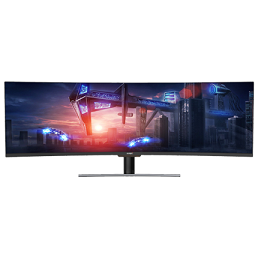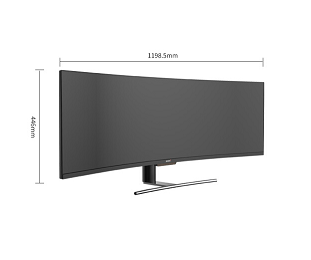How to Choose a Gaming Monitor
Are you in the market for a gaming monitor? If so, you may be wondering how to choose the right one. There are a few factors to consider when making your decision. In this article, we will discuss some of the most important things to keep in mind when choosing a gaming monitor. So, whether you're looking for your first gaming monitor or you're just looking to upgrade, read on for tips on what to look for!

1.Resolution
The first thing to consider is the Resolution. The higher the resolution, the sharper and more detailed the image will be. If you're looking for a top-of-the-line gaming experience, you'll want to choose a monitor with a high resolution. However, if you're on a budget or you don't need the absolute best image quality, you can get by with a lower resolution. Just keep in mind that you may need to upgrade your graphics card to take advantage of a higher resolution.
2.Refresh rate
Another important factor to consider is the refresh rate. The refresh rate is the number of times per second that the monitor refreshes the image. The common choices are 60Hz, 144Hz, and 240Hz. A higher refresh rate will result in a smoother image. If you're a competitive gamer, we highly recommend you getting at least a 144hz monitor. However, if you're just looking for a good gaming experience, a lower refresh rate will suffice.
3.Panel Type
The next thing to consider is the panel type. The three most common types of panels are IPS, TN and VA. IPS panels have the best image quality but are the most expensive. TN panels have faster response times but may have poorer image quality. VA panels are a good middle ground between the two.
4.Response time
The response time is the amount of time it takes for a pixel to change from one color to another. A lower response time means that the image will appear smoother and there will be less ghosting. If you're a competitive gamer, you'll want to choose a monitor with a low response time. However, if you're just looking for a good gaming experience, a higher response time will suffice. Generally speaking, a monitor with a response time of 5ms or less is considered good.
5.Panel Size and Curvature
The next factor to consider is the panel size and curvature. The most common sizes are 24 inches, 27 inches, and 32 inches. If you want a bigger screen, you can go up to 34 or 35 inches. Deciding to buy a curved or flat monitor for gaming is mainly a personal preference. Curved monitor may look better and give you a more immersive experience, but they're also more expensive. If you're on a budget, we recommend getting a flat monitor.
6.Adaptive Sync
The last factor to consider is adaptive sync. This is a feature that syncs the refresh rate of the monitor with the frame rate of the graphics card. This helps to eliminate screen tearing and artifacts. The two most common types of adaptive sync are FreeSync and G-Sync. FreeSync is supported by AMD graphics cards and G-Sync is supported by NVIDIA graphics cards. If you have an AMD graphics card, we recommend getting a FreeSync monitor. If you have an NVIDIA graphics card, we recommend getting a G-Sync monitor.

Now that you know how to choose a gaming monitor, it's time to pick one! We hope our article help you find the perfect monitor for your needs. Thanks for reading and happy gaming!